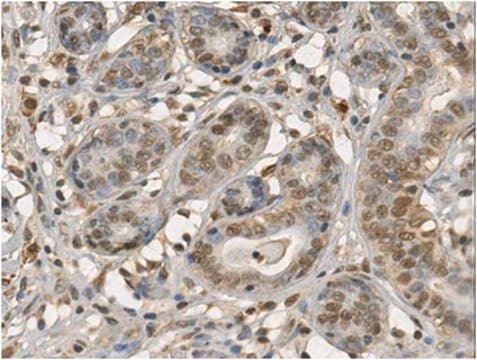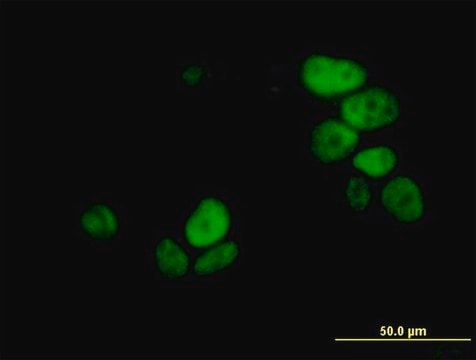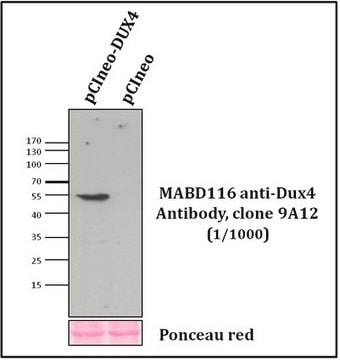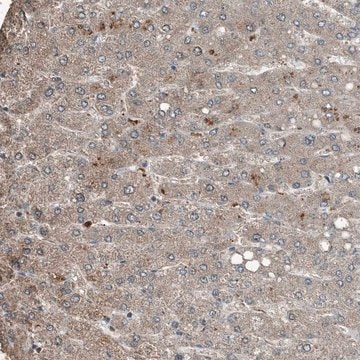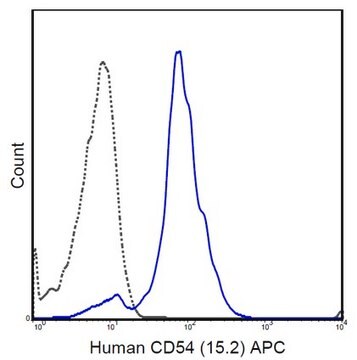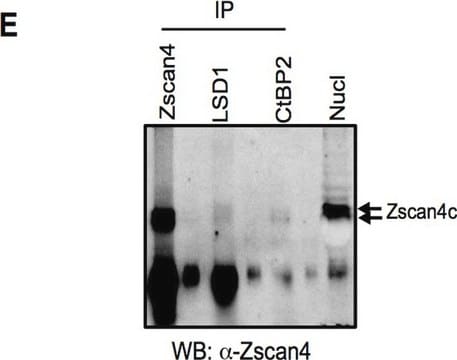MABE308
Anti-ICBP90/UHRF1 Antibody, clone 1RC1C-10
ascites fluid, clone 1RC-1C10, from mouse
Synonym(s):
E3 ubiquitin-protein ligase, inverted CCAAT box-binding protein, Nuclear protein 95, Nuclear zinc finger protein Np95, HuNp95, RING finger protein 106, Transcription factor ICBP90, Ubiquitin-like PHD and RING finger domain-containing protein 1, Ubiquitin
About This Item
Recommended Products
biological source
mouse
Quality Level
antibody form
ascites fluid
antibody product type
primary antibodies
clone
1RC-1C10, monoclonal
species reactivity
human
technique(s)
ChIP: suitable
immunocytochemistry: suitable
immunohistochemistry: suitable
western blot: suitable
isotype
IgG1
NCBI accession no.
UniProt accession no.
shipped in
wet ice
target post-translational modification
unmodified
Gene Information
human ... UHRF1(29128)
General description
Immunogen
Application
Epigenetics & Nuclear Function
Chromatin Biology
Immunocytochemistry Analyisis: A representative lot from an independent laboratory detected ICBP90/UHRF1 in ICC (Hopfner, R., et al. (2001). Gene. 266(1-2)15-23.).
Immunohistochemistry Analysis: A representative lot from an independent laboratory detected ICBP90/UHRF1 in human appendix and human breast carcinoma tissues (Hopfner, R., et al. (2000). Cancer Res. 60(1):121-128.).
Chromatin Immunoprecipitation Analyis: A representative lot from an independent laboratory immunoprecipitated ICB90/UHRF1 in ChIP (Felle, M., et al. (2011). Nucleic Acids Res. 39(19). 8355-8365.)
Quality
Western Blot Analysis: A 1:5,000 dilution of this antibody detected ICBP90/UHRF1 in 10 µg of HeLa cell lysate.
Target description
Physical form
Storage and Stability
Handling Recommendations: Upon receipt and prior to removing the cap, centrifuge the vial and gently mix the solution. Aliquot into microcentrifuge tubes and store at -20°C. Avoid repeated freeze/thaw cycles, which may damage IgG and affect product performance.
Analysis Note
HeLa cell lysate
Disclaimer
Not finding the right product?
Try our Product Selector Tool.
Storage Class Code
12 - Non Combustible Liquids
WGK
nwg
Flash Point(F)
Not applicable
Flash Point(C)
Not applicable
Certificates of Analysis (COA)
Search for Certificates of Analysis (COA) by entering the products Lot/Batch Number. Lot and Batch Numbers can be found on a product’s label following the words ‘Lot’ or ‘Batch’.
Already Own This Product?
Find documentation for the products that you have recently purchased in the Document Library.
Our team of scientists has experience in all areas of research including Life Science, Material Science, Chemical Synthesis, Chromatography, Analytical and many others.
Contact Technical Service